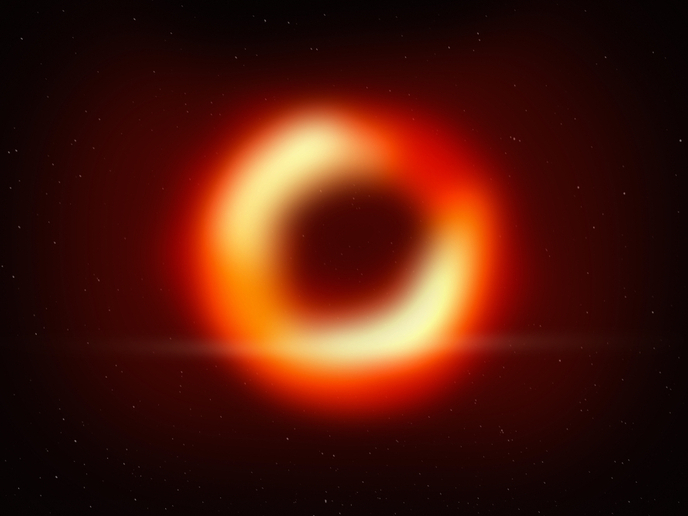New images of magnetic fields surrounding a black hole
In 2019, the world saw the first-ever image of a black hole and its shadow at the centre of Messier 87 (M87), a giant galaxy located about 54 million light years from Earth. Today, the international Event Horizon Telescope (EHT) collaboration involving researchers supported by the EU-funded AENEAS, BLACKHOLECAM and RadioNet projects has gone on to reveal a new image: the supermassive black hole viewed in polarised light. The polarisation of light can provide useful information about the magnetic fields of celestial objects. More specifically, it allows researchers to map the magnetic field lines that exist at a black hole’s inner edge. Having measured polarisation this close to the edge of a black hole for the first time ever, the astrophysicists could potentially provide further insight into how the M87 galaxy can launch a bright jet of energy and matter from its core. “We are now seeing the next crucial piece of evidence to understand how magnetic fields behave around black holes, and how activity in this very compact region of space can drive powerful jets that extend far beyond the galaxy,” observed Monika Mościbrodzka, a member of the EHT collaboration, in a news release posted on the ‘European Southern Observatory’ website.
The interplay of matter at the black hole’s edge
The high-energy jet shooting out of M87’s core extends at least 5 000 light years at optical wavelengths (and 100 000 light years at radio wavelengths) from its centre. Astronomers have used different models to figure out how matter behaves near a black hole. However, they still don’t understand precisely how matter falls into the black hole or how a jet larger than the galaxy is launched from a central region similar in size to the solar system. The new EHT image of the black hole and its shadow in polarised light has provided a crucial look at the area where matter flows into the black hole or escapes and is ejected into space. “The observations suggest that the magnetic fields at the black hole’s edge are strong enough to push back on the hot gas and help it resist gravity’s pull. Only the gas that slips through the field can spiral inwards to the event horizon,” explained Jason Dexter, who is also a member of the EHT collaboration. Eight observatories worldwide participated in the EHT observing campaign, including the Atacama Large Millimeter/submillimeter Array (ALMA) and the Atacama Pathfinder Experiment (APEX) in Chile. “With ALMA and APEX, which through their southern location enhance the image quality by adding geographical spread to the EHT network, European scientists were able to play a central role in the research,” stated Ciska Kemper of BLACKHOLECAM and RadioNet project partner European Southern Observatory. “With its 66 antennas, ALMA dominates the overall signal collection in polarised light, while APEX has been essential for the calibration of the image.” The results of the research supported by AENEAS (Advanced European Network of E-infrastructures for Astronomy with the SKA), BLACKHOLECAM (Imaging the Event Horizon of Black Holes) and RadioNet (Advanced Radio Astronomy in Europe) are presented in two papers: ‘Polarimetric Properties of Event Horizon Telescope Targets from ALMA’ and ‘First M87 Event Horizon Telescope Results. VII. Polarization of the Ring’. Both papers are published in ‘The Astrophysical Journal Letters’. For more information, please see: AENEAS project website BLACKHOLECAM project website RadioNet project website
Keywords
AENEAS, BLACKHOLECAM, RadioNet, black hole, Messier 87, M87, polarised light, Event Horizon Telescope, EHT, magnetic field



